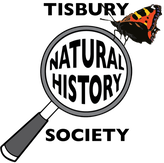|
As the weather warms and the days lengthen so we begin to see more wildflowers in the country and along the roadside. After the spring equinox is referred to as the vernal period. Late winter before the equinox is referred to as prevernal. Classic prevernal flowers are those that bloom before trees and bushes come into leaf and throw shade over the plants. An example is the primrose which we will find blooming in woodlands and under hedges before the leaves break.
The primrose spreads its leaves in a rosette against the ground around the flowers. This allows it to maximise the light that they can absorb while the sun remains relatively low. This gives them a competitive head start, allows the flowers to be fertilised and set seed early in the year before other taller plants shade it out. At this time, its bright yellow flowers are hard to miss and are a welcome source of nectar for any early emerging insects. Later in the year the leaves become pallid and die back. Another flower providing nectar at this time of year is Coltsfoot. This plant looks like a small dandelion but in contrast to the primrose, it flowers before its leaves appear. Each composite flower is held on a short scaly stem; quite different to the dandelion’s smooth one and similar to sedum flower stems. As the flower’s centre is dense, it also looks like a large all-yellow daisy. It is a creeping perennial weed of rough ground and field edges and as it spreads by rhizomes underground if it gets into your garden, it can become a pest. The leaves emerge after the flowers have died back and are shaped like a heart or horse’s hoof, hence the name. Historically it was used as a remedy for coughs and colds. Andrew Graham Comments are closed.
|
Photo: Avocets (Izzy Fry)
The headers display photos taken by our members. Do get in touch via the Contact Form if you'd like to submit a photo for selection.
Archives
May 2024
Categories
All
|

 RSS Feed
RSS Feed